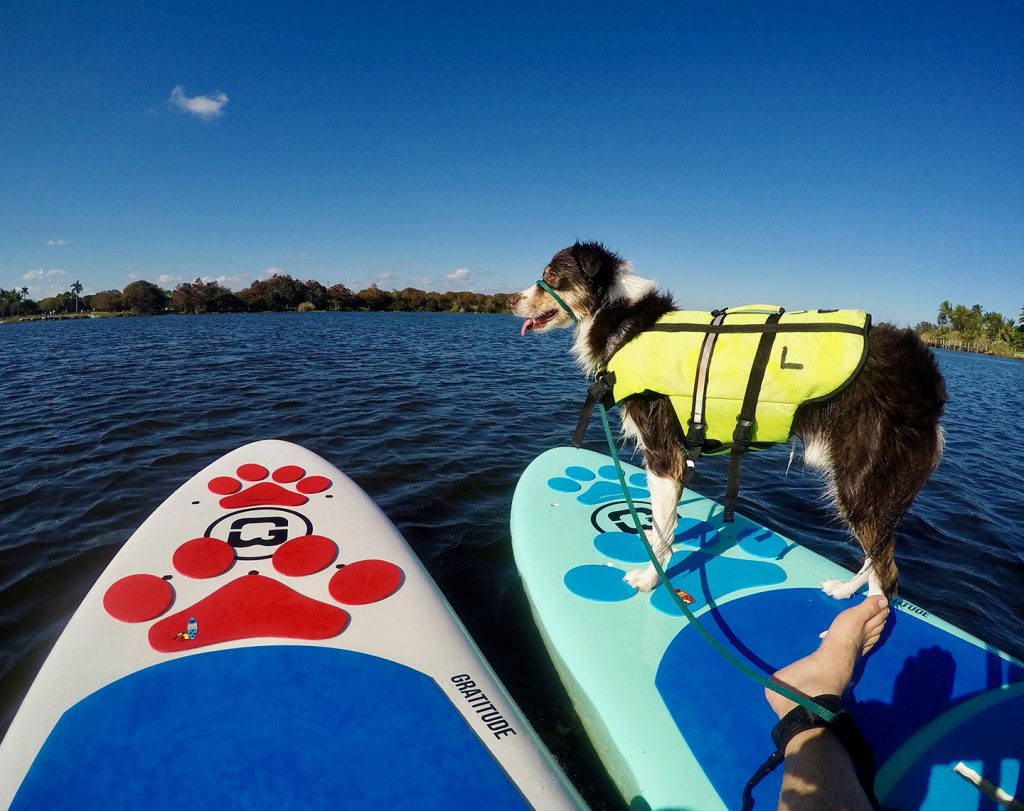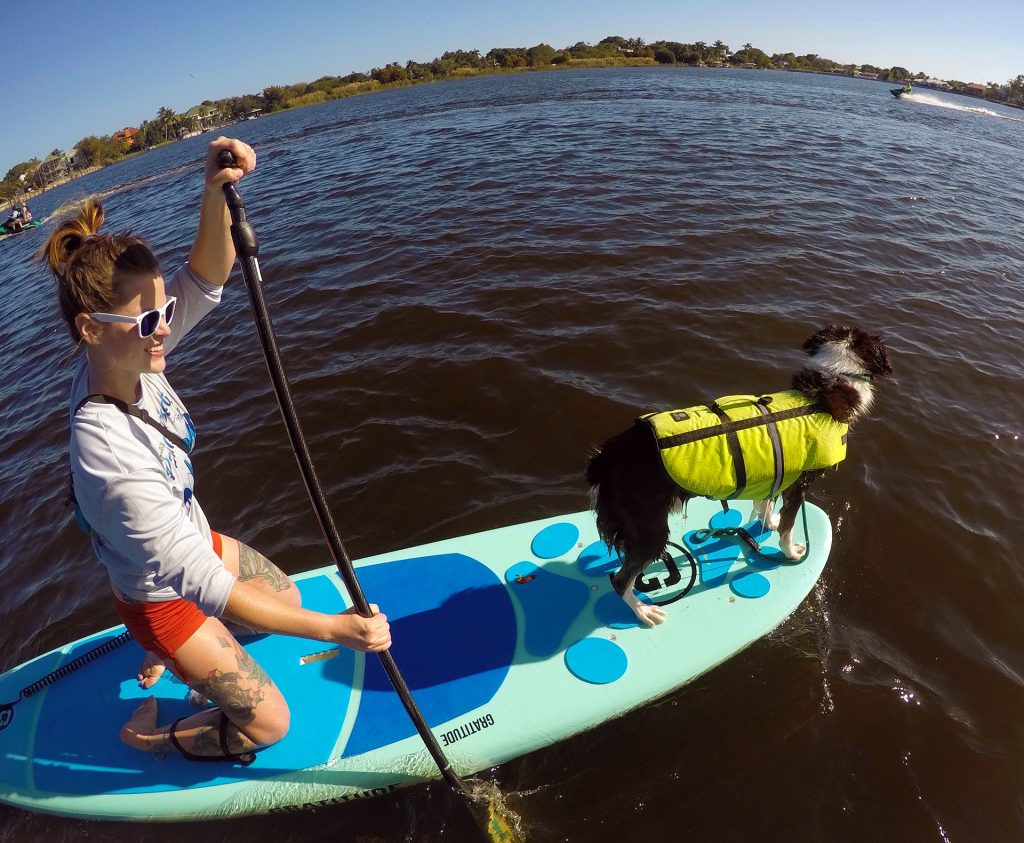I have two Aussies, neither of which particularly like the water. The boy is a red-tri and is turning by 8 and the girl is a blue Merle (a covid-baby) who just turned 1. The boy has been great in public places and interacting with other dogs. His only triggers are people running and small animals (prey driven). The girl hasn’t had much exposure to other dogs due to growing up in the Pacific Northwest where we’ve been quarantining for the last year. As a result of that, she has a lot of anxiety and is afraid of just about everything.

To socialize both dogs I decided I would like to take them out on the water. I used to be a Paddle instructor for a watersports charity in Florida called Salty Dog Paddle for a few years, and I’m a former vet tech, so I’ve gotten to work with a lot of dogs with behavioral issues over the years. I will admit that I’ve never had any dogs as bad as my own on a paddleboard though.
With Aussies being herding dogs, the boy tries to bite the water if there is any movement like boat wake or waves. As you might imagine when he tries to do that, our weight disbursement is off, and I end up going flying off the board and if we’re in salt water it can be extremely dangerous for dogs to drink saltwater since it throws out their electrolyte levels. The girl is much better but gets very fearful of the water and tries to climb up me when I’m on the board, which also makes it tough to balance.
So, being a Paddle instructor and with all the dog behavioral training classes I’ve taken over the years in mind I’ve come up with some tips for dealing with high anxiety dogs on Paddle boards.

10 Tips for Paddling with High Anxiety Dogs
Know and master the Paddle brace stroke.
Take the dogs to a park or a long walk to get some energy out first
Start small. Find a body of water that isn’t a steep drop-off (avoid marinas, piers, docks, and harbors) and has a gradual beach area. I prefer fresh water over salt water in case they drink it.
Check bacteria levels. Here in the Pacific Northwest, we get blue-green algae in freshwater lakes, which is toxic to dogs, so make sure the levels are low enough to be safe for them. Red tide is also dangerous in saltwater areas like Florida.
If you’re taking them in the morning, skip their breakfast and instead pack what you would have fed them into a treat pouch like the ones that dog trainers use.
If you haven’t worked on commands like “leave it” “down” “let’s go” or “side” that’s okay . Just be able to distract them if something does grab their attention, which you can do with a treat and using it to turn their head away from the distractor to get it. Try keep them occupied until the distractor passes. That can at least give you a chance to squat down onto your knees on the board in case they do try to jump.
Attach your dogs to a coil leash and then attach that leash to either the handle of the board or your waist. If your board has a sunken in carry handle I recommend getting a handle that protrudes. Depending on the epoxy coating on the board you may be able to use suction cup clamps. I will usually attach the boy to the handle since he’s 60 lbs. and the girl to my waist since she’s 30, so their cords don’t get caught up. Also, don’t forget to test their life jackets before going out! I’ve had handles break off of my fairly new canine PFD’s due to saltwater dry rot.
I mentioned earlier that you should use their food as treats. If that doesn’t work to get their attention and distract them, try using high value treats like egg yolks, bananas, blueberries, etc.
Bring some water with you in a bowl that you can stabilize on the board for them to drink from, so they’re not tempted to drink the water you’re paddling in. I use a squeeze type bottle with a little bowl built in that the water accumulates in.
Finally, whether you’re with a single dog or two, try keep your balance points in mind on the board. My two Dogs tend to run back and forth so if they’re on either end I will stand in the middle but I’m ready to move up to the nose if they both go to the tail or vise-versa. That is when your brace stroke will really come in handy!
Written by Samantha Dishman, SDP Level 2 Paddle Instructor, NASM-CPT
